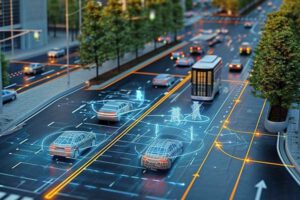Until recently, if we wanted to know how a person drove, we would have four options: Sit next to them and watch, install a tachograph, have a number for the public to call on the back of the vehicle or rely on police reports. Each one of those methods was fraught with issues. You can’t sit next to somebody all the time and doing so for a short period may not be a true reflection of how they normally drive. Police reports are only useful in telling you that they were guilty of an infringement and only if they are actually caught. The numbers on the back of the vehicles for the public to call are only useful if someone actually calls them, which is a rather difficult and possibly illegal thing to do when you are driving. Finally tachographs are only fitted on large vehicles, do not produce information in real time and can only give the reader limited information.
The reasons for monitoring driving behavior
The need or wish to monitor a driver’s behavior is not purely curiosity. So many accidents occur because of reckless driving. Driver’s may be pressured to get between two places quickly, they may be distracted by their telephone or of course their judgment may be inhibited by drugs or alcohol. The people monitoring the driving may be the company a person works for or the person insuring the vehicle. The purpose of monitoring the vehicle and how it is being driven is to promote good driving habits and dissuade bad ones. An accident caused by reckless driving costs both time and money. Time when the car and driver are off the road and money to replace or repair the vehicle.
How technology is helping
Recent advances in technology are helping to monitor a driver’s performance and habits more accurately and in real time. There is no longer a need to wait for the vehicle to return to read the tachograph, notice damage to the vehicle or a 3 month delay to receive a speeding ticket. There are different types of driving behavior monitoring systems, depending on the purpose and the level of detail required. Some systems use sensors embedded in the vehicle, such as GPS, cameras, radars, or accelerometers, to capture data on the vehicle’s movement and surroundings. Other systems use smartphone apps or wearable devices that connect to the vehicle via Bluetooth or OBD-II port, to collect data on the driver’s actions and reactions. Some systems combine both types of sensors to get a more comprehensive picture of driving behavior.
Privacy issues
There are some who claim that by collecting data on their driving habits, their privacy is being invaded. However, the companies doing this are open that they are doing it, and how they are doing it. It is either the company that they work for or an insurance company. The person does not have to take out that particular insurance policy and does not have to work for that company if they feel threatened by the technology.
The Future
In an ideal world, drivers would not become distracted and they would always drive carefully. Vehicular accidents through driver error would be almost nonexistent. Unfortunately, people don’t always drive as if their mother or grandmother is sitting next to them. There are more and more distractions that could lead to an accident. So monitoring a driver’s habits with indisputable data is the way forward. With this you can analyze the way a vehicle is handled on a regular and constant basis, which promotes better driving and will lead to less accidents and road fatalities.




